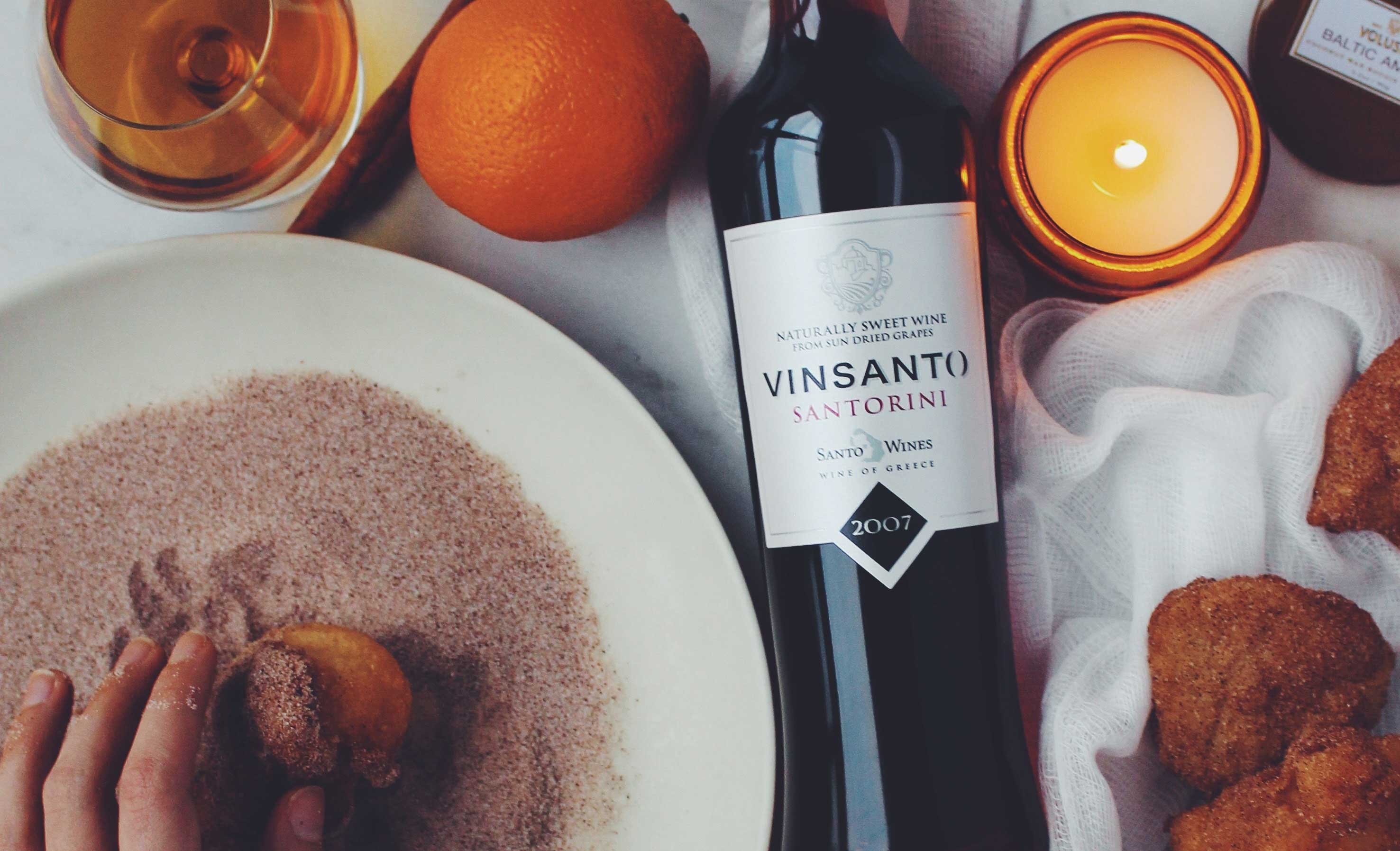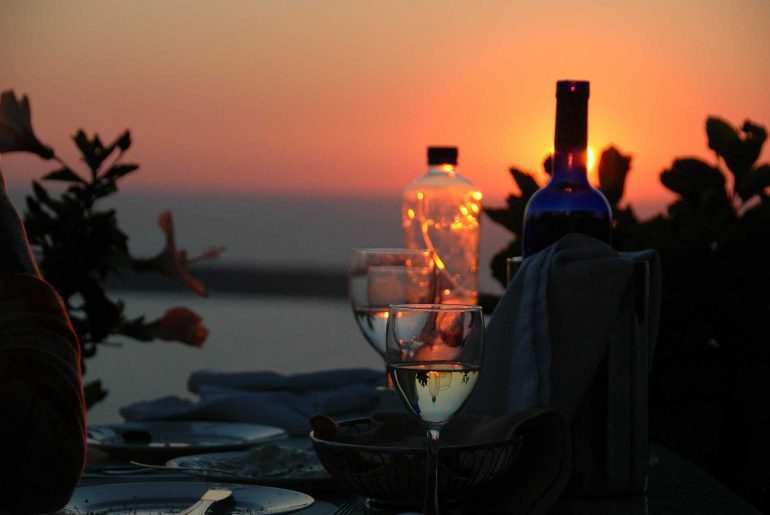The unique character of Santorini wines has been known since ancient times.
What was an overall trade hub for the Minoans and Aegean civilization millennia ago, Santorini became famous for wines worldwide thanks largely to the influence of the Venetians. It seems appropriate here to introduce the varieties of grape that go into making fabulous Santorini wines. Here’s a little primer to acquaint with the Aidani, Athiri, Mandilaria, Mavortragano that go into making Santorini’s famous Vinsanto and other fine wines.
Since the notorious Thera volcano eruption that probably ended the Minoan Civilization, the soil of the Santorini took on some unique characteristics. It is very rich, owing to its volcanic origins, and possess essential minerals, while being almost entirely devoid of organic matter. These attributes help Santorini winemakers produce wines of exceptionally low pH and very high acidity, but also create obstacles to cultivation. For one thing, most of the varieties found on the island must be handpicked to separate from the basket vines grown right on top of the soil, which makes harvest time a challenge.
Vinsanto – ambrosia of the Gods
Vinsanto – an abbreviation of vin[o] santo[rini] and not the Tuscan Vin Santo – was the first Santorini wine to become famous, in the Middle Ages, during the occupation by the Republic of Venice. But it reached worldwide renown after hitting the Russian markets in 1793.
Vinsanto is made from Assyrtiko (pronounced ah-SEER-tee-koh), the island’s flagship grape, and Aidani grapes, which are dried in the sun.
According to Greece and Grapes, “Vinsanto – which due to the sake of age rightfully has the primacy among the island’s wines – is considered as the holdover of Passos the raisin wine of ancient times, that held prominence in feasts and the Aegean island were famous for its production. I might as well brag that it continues the winemaking tradition that Isiodos is describing, according to which grapes were exposed to the sun for 10 days and for 5 more days they were drying in the shade.”
Beyond its rich history, Vinsanto is a beautiful golden orange, sweet wine when it’s young, or dark like mahogany when it is aged. The taste is sublime. A description by New Wines of Greece does it justice:
“A young Vinsanto possesses a golden orange color and fruity character reminiscent of quinces, braised figs, dates, and ripe yellow fruit, touched with honey and caramel. On the other hand, once it has become a venerable old nectar, it is as dark as mahogany and possesses intense underlying aromas replete with coffee, dried fruit, molasses, and incense.”

Aidani
One of Santorini’s ancient varieties, these grapes produce wonderfully aromatic wines of medium body. The grapes serve well blending with Vinsanto blends. Aidani is famous for its floral aroma and for being a near perfect blending partner of Assyrtiko.
Assyrtiko
This variety is one of the first noble white grapes in all Europe. Originating in Santorini, the grapes possess a distinctive character because of the island’s volcanic soil. Resistant to most natural diseases, the variety is also one of the most robust anywhere. These grapes make up over 70% of the vineyards on the island. One particular characteristic of these grapes is the capability to produce high alcohol content along with high acidity, which allows for a long aging process. Assyrtiko grapes produce a citrus aroma and are best blended with Athiri and Aidani to make the sweet Vinsanto.
Athiri
These grapes are one of the most ancient varieties of Greece. They were prized during the Byzantine era for producing a medium-bodied white wine with a delicate aroma and sweetness. Named for “Thira,” the ancient name for Santorini, these grapes are mostly used to create interesting and popular blends. The Athiri grapes are also noted for their citrus aroma, and for making refined rosés when mixed with Santorini’s red varieties. The grapes also go into making Retsina on the island of Rhodes.
Mandilaria
This is another variety whose origins have faded into antiquity. The grapes produce a deep red color and a medium body with hints of dark red fruits. They are used in blends because of this deep red color. These blends are made more interesting by the unique qualities of the Mandilaria, the robust tannic qualities, and impressive fruity aroma.
Mavrotragano
If Santorini is a rare destination, then this variety of red grapes is even rarer. Virtually extinct, the Mavrotragano is a protected species that produces a deep red color. Intense tannins make the wines from these grapes much more complex, which adds deeper character combined with fresh fruits and spices. Traditionally, the variety was used in the production of sweet wines. However, wineries have systematically replaced many of the vines with Assyrtiko, which guarantees more lucrative options for growers.




